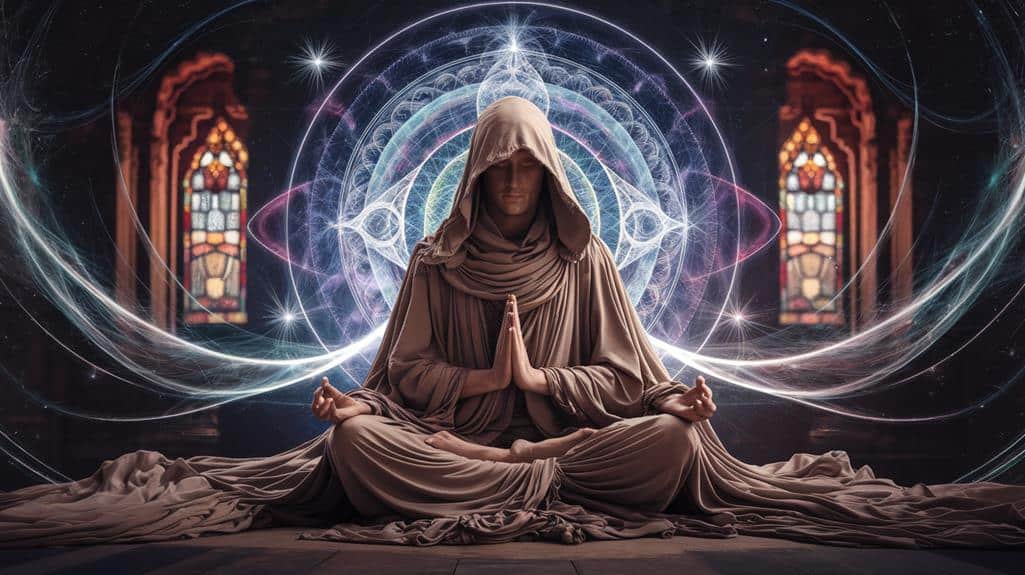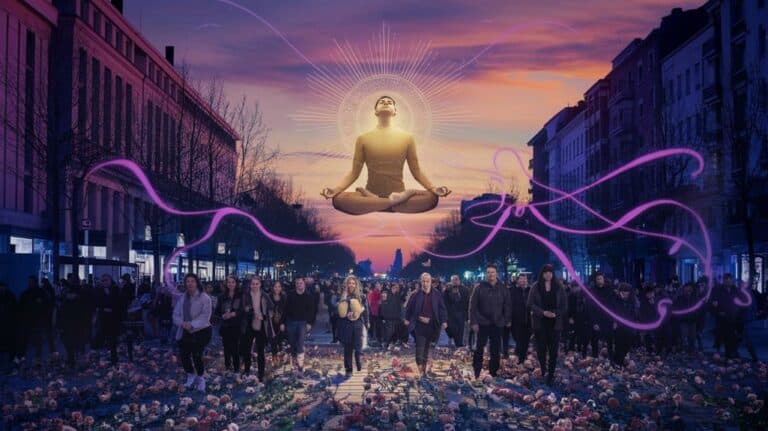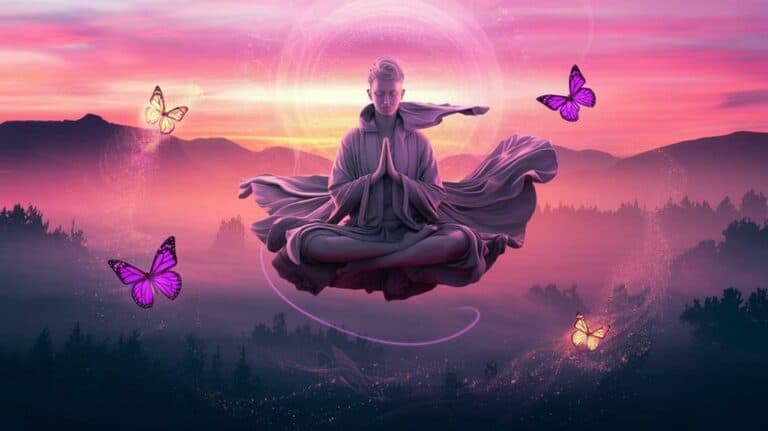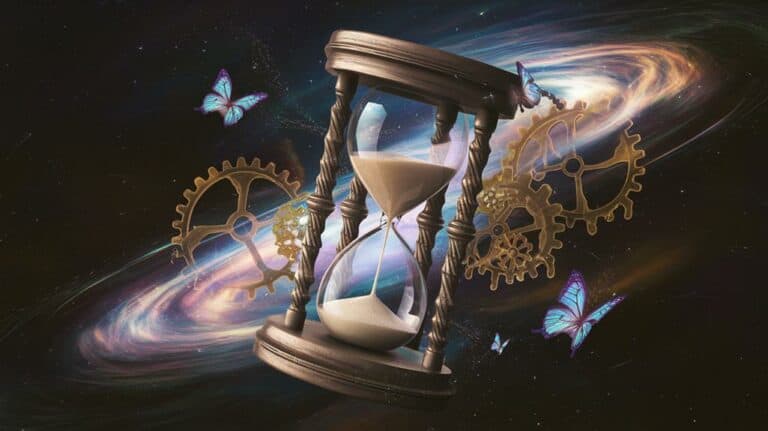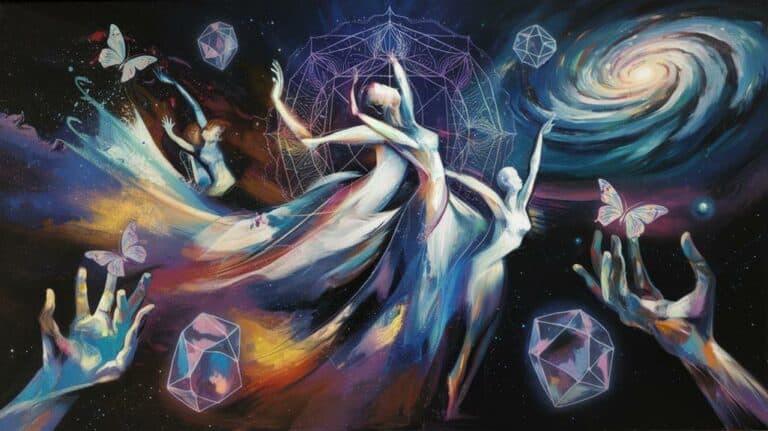What Is Mysticism in Religion?
You’ll find that mysticism in religion isn’t quite what most people imagine. While popular culture often portrays it as mysterious rituals or supernatural powers, true religious mysticism represents something far more profound: a direct, personal encounter with ultimate reality or the divine. It’s the difference between simply knowing about something and experiencing it firsthand. Throughout history, mystics across all faiths have described transformative moments of unity with the sacred that transcend ordinary perception and rational thought. As you explore this fascinating dimension of spiritual life, you’ll discover why these experiences have captivated seekers for millennia and continue to intrigue both religious practitioners and scholars today.
Defining Religious Mysticism
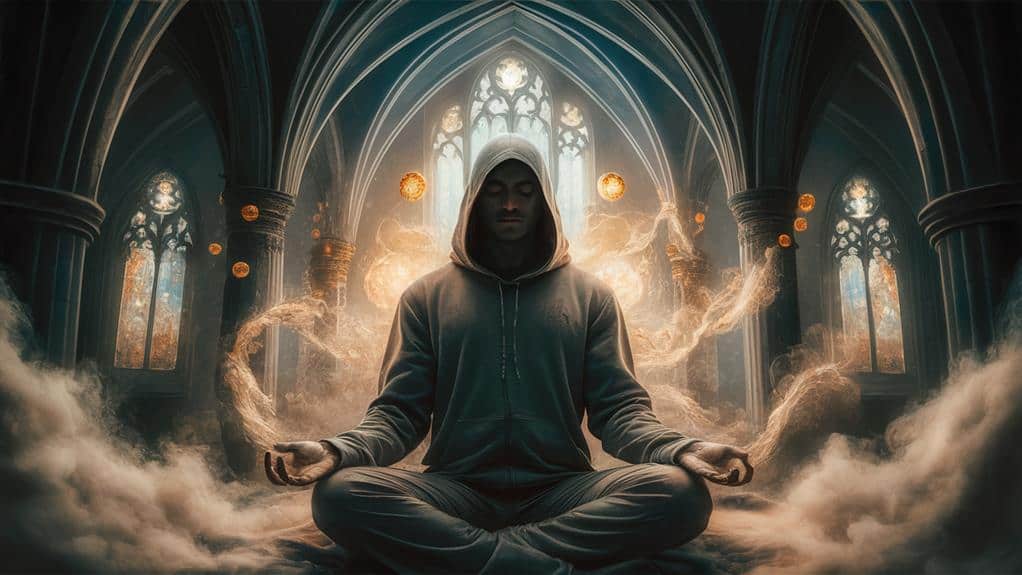
Religious mysticism refers to the direct, personal experience of ultimate reality or the divine through altered states of consciousness, meditation, or contemplative practices.
You’ll find that mystical experiences transcend ordinary perception, taking you beyond the limitations of rational thought into domains where you directly encounter what mystics describe as the sacred, the infinite, or the absolute.
When you explore mystical traditions, you’ll discover they share common elements across different faiths: the dissolution of ego boundaries, a sense of unity with all existence, and an ineffable knowing that defies conventional description.
You’re encountering a dimension of religious experience that’s deeply personal yet paradoxically universal, where your individual consciousness opens to something vast and transformative.
Through mystical practices, you’ll learn to quiet your analytical mind and enter states of profound receptivity, where the boundaries between subject and object, self and divine, begin to blur.
You’re not just studying about the divine when you engage with mysticism – you’re being invited to experience it directly, to move beyond intellectual understanding into a domain where you become one with what you seek.
Origins and Historical Context
These profound mystical experiences have deep historical roots stretching back to humanity’s earliest spiritual awakenings.
You’ll find traces of mysticism in ancient shamanic practices, where our ancestors first sought direct communion with the divine through ritual, meditation, and sacred plant medicines.
As you explore further, you’ll discover how mystical traditions emerged independently across diverse cultures – from the Vedantic seers of ancient India to the Oracle at Delphi in classical Greece.
You’re part of a lineage that includes Desert Fathers seeking truth in solitude, Sufi poets whirling in divine ecstasy, and Kabbalistic scholars revealing cosmic mysteries through sacred texts.
When you examine medieval Christian mystics like Meister Eckhart and Julian of Norwich, you’ll notice how they’ve shaped contemplative practices that still resonate today.
Their experiences mirror those of Zen masters and Indigenous wisdom keepers, revealing universal patterns in humanity’s quest for direct spiritual knowledge.
You’re connected to this timeless tradition that transcends religious boundaries, where seekers have consistently pushed beyond conventional worship to experience firsthand the mysteries at the heart of existence.
Common Mystical Practices
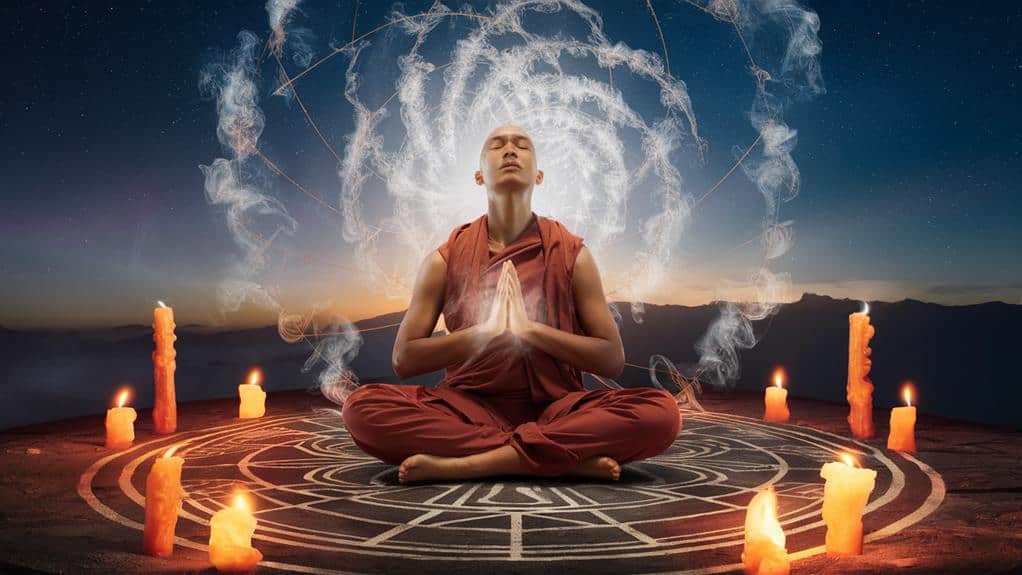
Mystical practices boil down to several core methods that span cultures and traditions worldwide.
You’ll find meditation at the heart of most mystical paths, where you’re invited to still your mind and open yourself to deeper realities beyond ordinary perception.
Through contemplative prayer, you’re entering into direct communion with the divine, transcending formal religious structures to experience a more intimate spiritual connection.
Sacred chanting and rhythmic movement serve as gateways to altered states of consciousness, where you’ll discover that sound vibrations and bodily motion can shift your awareness to mystical dimensions.
You might engage in fasting and ascetic practices that strip away physical attachments, allowing your spirit to become more receptive to transcendent experiences.
Through visualization techniques, you’re able to journey into symbolic landscapes of the soul, while breathing exercises help you tap into essential spiritual energies.
These practices aren’t mere routines—they’re transformative tools that you can use to pierce the veil between ordinary and extraordinary reality.
Each method offers you a unique pathway to direct spiritual experience, helping you break free from limited perceptions and touch the infinite.
Mysticism Across World Religions
While distinct in their outer forms, major world religions share a common mystical core that points to the direct experience of ultimate reality.
You’ll find Sufis in Islam seeking fana (annihilation of the ego), while Buddhist practitioners pursue enlightenment through meditation and mindfulness. Hindu yogis engage in deep contemplative practices to realize their oneness with Brahman, and Christian mystics speak of divine union through contemplative prayer.
You’ll discover that these mystical paths, though culturally unique, often lead to strikingly similar insights about the nature of consciousness and reality.
In Judaism, Kabbalistic teachings reveal the hidden dimensions of divine unity, while Taoist masters speak of merging with the Tao through wu-wei (non-doing). Each tradition offers you specific practices and frameworks, yet they’re all pointing to what’s beyond concepts and forms.
As you explore these various mystical approaches, you’ll notice they’re not about accumulating knowledge but rather about direct experience.
They’re inviting you to go beyond intellectual understanding to discover what lies at the heart of existence – whether you call it God, Buddha-nature, or the Absolute.
Sacred Texts and Mystic Teachings

Sacred texts across traditions contain layers of meaning that extend far beyond their literal interpretations. You’ll find that mystics throughout history have examined these deeper dimensions, uncovering wisdom that transcends the written word. When you explore texts like the Bhagavad Gita, the Bible’s Song of Solomon, or Rumi’s poetry, you’re engaging with works that serve as gateways to profound spiritual experiences.
Within these sacred writings, you’ll discover that metaphor and symbolism aren’t mere literary devices—they’re keys that reveal doorways to direct spiritual knowledge. The mystic teachings embedded in these texts invite you to move beyond intellectual understanding into experiential wisdom.
You’ll notice how Sufi manuscripts speak of wine and love to describe divine intoxication, while Kabbalistic texts use the imagery of light and vessels to convey cosmic truths. These texts don’t just inform; they transform. As you immerse yourself in their depths, you’ll find that each reading reveals new layers of meaning, speaking directly to your soul’s journey.
The words themselves become meditation objects, bridges between the visible and invisible dimensions of existence.
The Mystic Path
Throughout history, seekers have discovered that the mystic path isn’t a straight line but a spiral journey into deeper awareness. As you venture inward, you’ll find yourself revisiting familiar territories with newfound understanding, each revolution bringing you closer to the sacred core of existence. This journey demands your complete surrender, asking you to release the comfortable illusions that have shaped your perception of reality.
You’ll discover that the mystic path follows universal stages: first awakening to something beyond the ordinary, then passing through periods of profound purification where you’ll shed layers of ego and attachment.
You’ll experience moments of illumination that transform your understanding, followed by periods of integration where these insights become part of your lived experience. The dark night of the soul may test your resolve, yet it’s through this darkness that you’ll find your deepest truth.
As you progress, you’ll recognize that the path itself becomes your teacher, revealing wisdom through direct experience rather than intellectual understanding. Your journey isn’t about reaching a destination but about becoming increasingly aware of what already is.
States of Mystical Experience
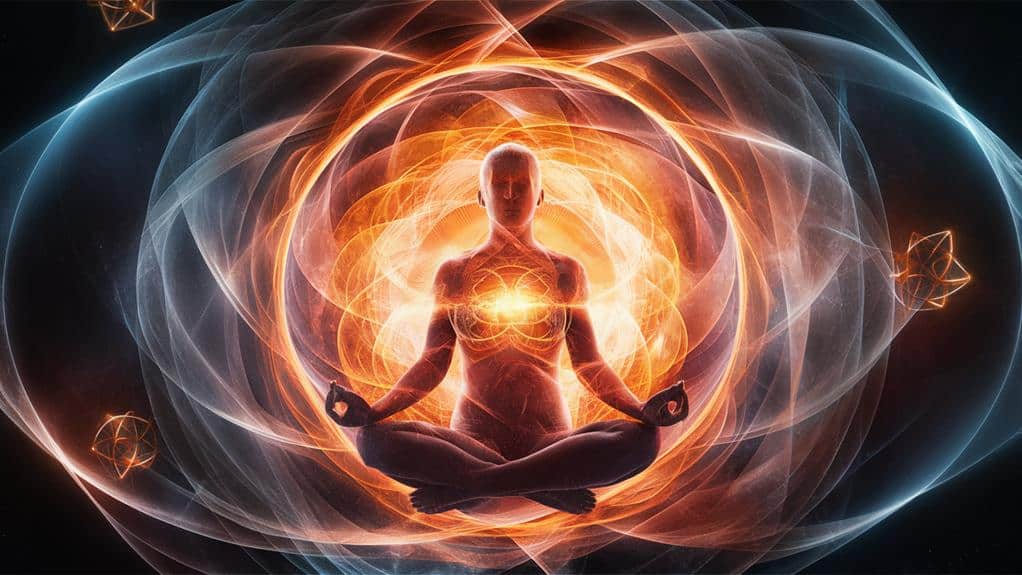
As you explore deeper into mystical consciousness, you’ll encounter what’s known as the ineffable quality – the frustrating yet fascinating inability to fully express your experience in words.
You might feel overwhelmed by a sense of absolute truth or direct knowing that surpasses rational thought. During these states, you’ll often experience intense positive emotions: ecstasy, bliss, or profound peace that’s fundamentally different from everyday happiness.
You’ll notice that these experiences carry a paradoxical nature – they’re both intensely personal yet feel universal, empty yet full, transcendent yet immanent.
What’s remarkable is how these states often leave you with an enduring sense of transformation, fundamentally altering your perception of reality and your place within it.
Notable Mystics Throughout History
These profound mystical experiences have been documented by remarkable individuals across cultures and time periods.
You’ll find illuminating accounts from mystics like Rumi, whose ecstatic poetry continues to bridge spiritual traditions, and Hildegard of Bingen, whose visions merged divine revelation with natural wisdom. Each mystic has carved a unique path toward transcendent understanding.
In the East, you’ll discover Ramakrishna, who explored multiple religious traditions to confirm their underlying unity, while in Islamic mysticism, you’ll encounter Al-Ghazali, whose intellectual journey led him from philosophical skepticism to direct spiritual knowledge.
The Christian tradition brings you Teresa of Ávila, whose detailed descriptions of interior castles map the soul’s progression, and Meister Eckhart, whose bold teachings challenged conventional religious boundaries.
You can trace how these mystics’ experiences, though deeply personal, share striking similarities across centuries and cultures.
They’ve left you a legacy of wisdom that transcends their original contexts – whether through Julian of Norwich’s revelations of divine love or Ibn Arabi’s insights into the unity of existence.
Their paths remind you that mystical awareness isn’t confined to any single tradition or time.
Modern Approaches to Mysticism
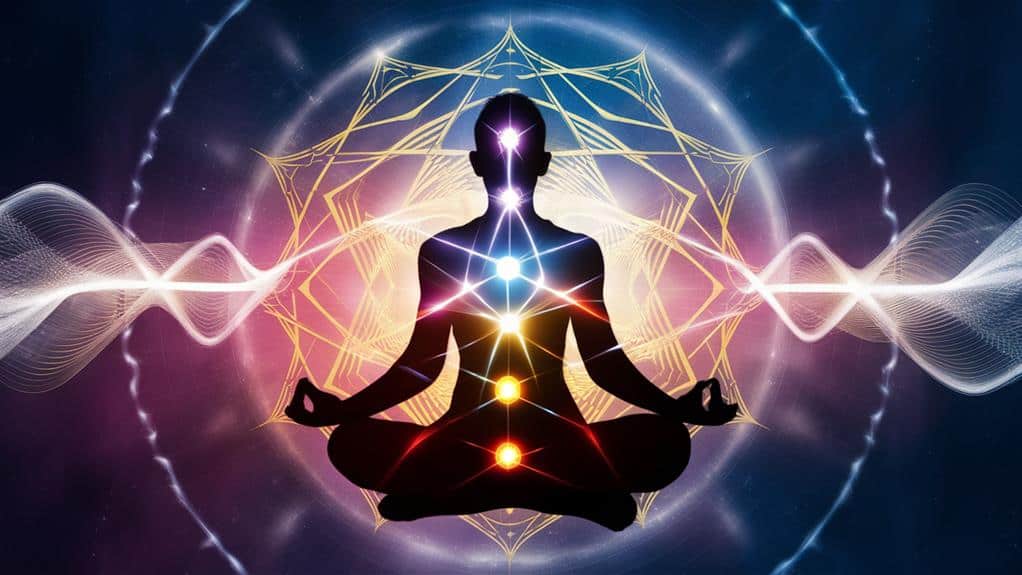
Modern interpretations of mysticism have evolved beyond traditional religious frameworks, incorporating insights from psychology, neuroscience, and comparative religious studies. You’ll find that today’s mystics often blend ancient wisdom with contemporary understanding, creating bridges between scientific inquiry and spiritual experience.
Through mindfulness practices, meditation apps, and secular spirituality, you’re now able to explore mystical states without necessarily adhering to formal religious traditions.
You can observe how modern approaches emphasize direct, personal experience over dogmatic teachings, while scientific studies on meditation and altered states of consciousness validate what mystics have described for millennia.
In your own exploration, you’ll discover that neuroscientific research has revealed how contemplative practices affect brain activity, offering tangible evidence of mysticism’s transformative power.
Whether you’re drawn to traditional paths or contemporary methods, you’ll find that modern mysticism embraces both rational understanding and transcendent experience. This integration allows you to engage with mystical practices while maintaining intellectual rigor, creating a balanced approach that honors both ancient wisdom and modern knowledge.
The boundaries between sacred and secular continue to blur as you navigate these evolving perspectives on mystical experience.
Science and Mystical Phenomena
Scientific investigations into mystical phenomena frequently bridge the gap between subjective experience and empirical research.
When you explore the intersection of science and mysticism, you’ll discover that researchers have documented measurable changes in brain activity during meditation, prayer, and other transcendent states. Modern neuroimaging techniques now allow you to witness how mystical experiences correlate with specific patterns of neural activation, particularly in regions associated with self-awareness and emotional processing.
You’ll find that scientific studies have identified commonalities in mystical experiences across cultures and religions, suggesting underlying universal mechanisms in human consciousness.
Through careful examination of physiological responses, you can observe how your body reacts during reported mystical states – from altered breathing patterns to shifts in heart rate variability.
What’s particularly intriguing is how quantum physics has begun to offer frameworks for understanding phenomena that mystics have described for millennia.
While science can’t definitively prove or disprove mystical claims, it’s providing tools to examine these experiences through an objective lens, helping you understand the measurable aspects of what was once considered purely subjective territory.
Conclusion
You’ve journeyed through the depths of religious mysticism, discovering how this profound path transcends ordinary perception and connects seekers with divine reality. As you reflect on these timeless practices and teachings, you’ll find they’re still relevant in today’s world. Whether through meditation, contemplative prayer, or other spiritual disciplines, mysticism offers you a transformative avenue to explore life’s deepest mysteries and your own connection to the sacred.



